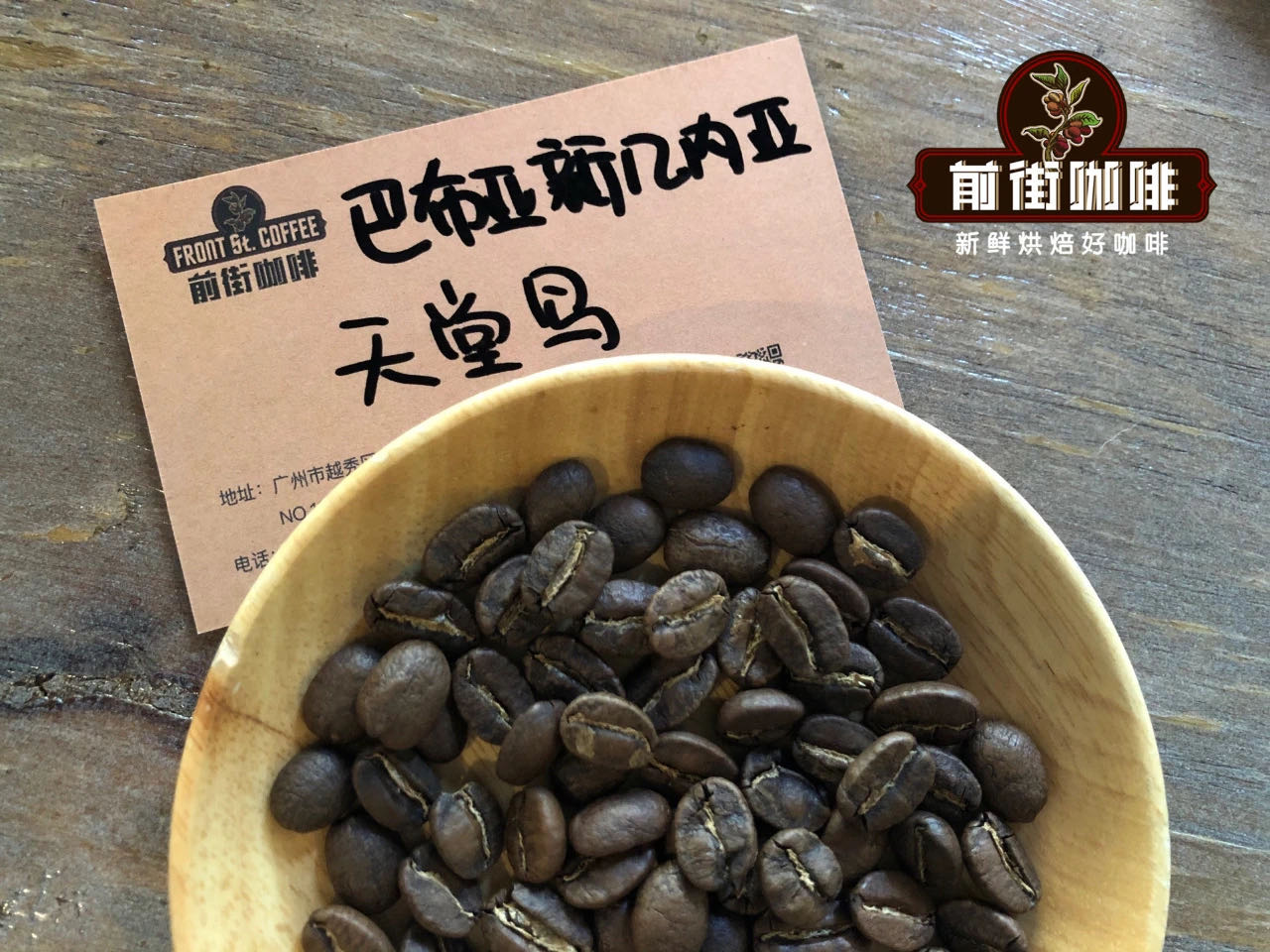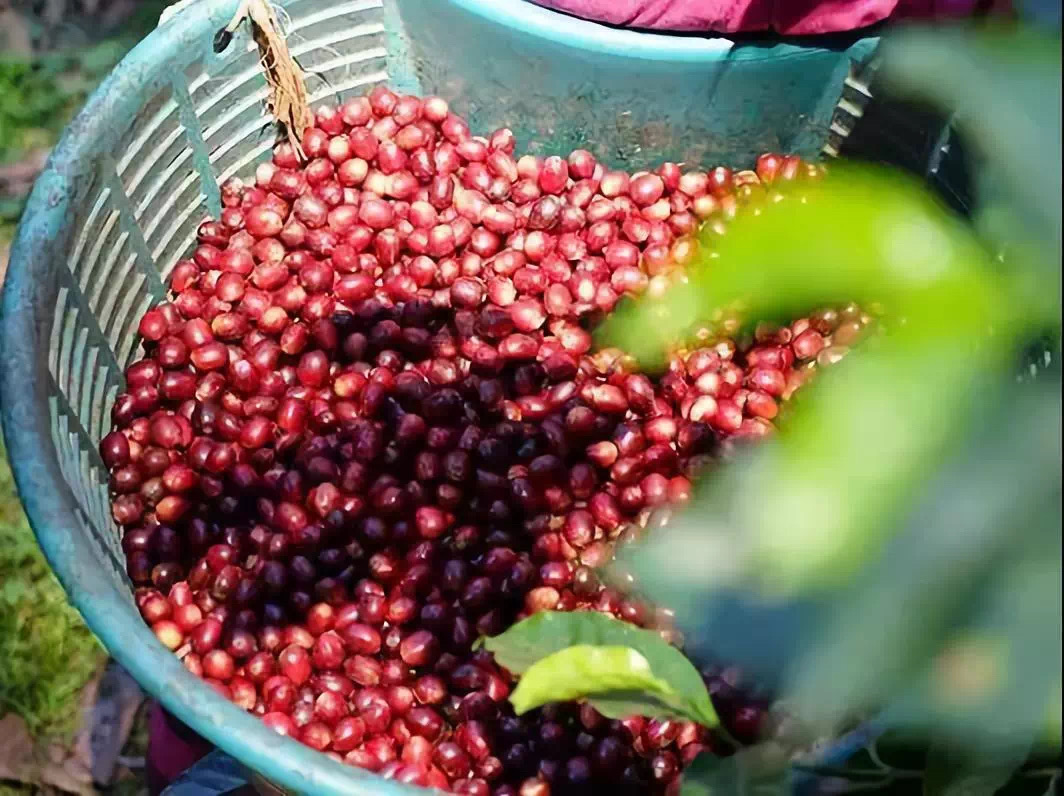Papua New Guinea Coffee Bean varieties recommend Papuan Paradise Bird Coffee Bean making hand-flushing course
Papua New Guinea coffee beans are called Little Blue Mountain coffee beans by outsiders. Why? Blue Mountain Coffee beans are famous all over the world, even people who don't drink coffee know them. So why is it called Little Blue Mountain? Because it and Jamaica Blue Mountain coffee beans are highly similar, the first is coffee beans, both of them are iron pickup coffee beans, iron pickup is the most classic high-quality Arabica species, many commercial improved varieties are derived from this. Iron pickup coffee beans have excellent taste and are recognized as a boutique coffee variety, but the yield is very low and vulnerable to rust, so more manpower management is needed. Iron pickup coffee beans are native to Ethiopia and southeastern Sudan and are the most widely cultivated variety of coffee in the Western Hemisphere. The plant is more robust, but can not bear the light, the top leaf of the iron pickup is red copper, which is called red top coffee.
Then their environment, rainfall and elevation are also very similar. The coffee produced is mainly distributed in the mountain areas at an altitude of 1500 to 1900 meters. The scenery is picturesque and there is abundant Rain Water and volcanic soil. It is very suitable for growing high-quality Arabica coffee beans.
The variety of hand-brewed coffee beans recommended today in Papua New Guinea is the Bird of Paradise. It can be said to be the classic representative of Papua.

Papua New Guinea is culturally diverse, with more than 800 languages, and most highland tribes were not influenced by the West until the early 1900s. Commercial coffee was grown in 1920 after coffee seeds were imported from Jamaica (a Typica variety called the Jamaican Blue Mountains). In addition, the Arusha (Arusha) variety of this Bebe coffee is grown only in PNG. Initially, most Papua New Guinea coffee beans were grown in 18 large plantations. But today, small farmers say 85% of the coffee in PNG is grown in the "coffee garden". These farmers live on their own farms and use coffee as a by-product. There are several to hundreds of coffee trees in their coffee garden. Papua New Guinea Coffee Industry Company (Coffee Industry Corporation) admitted that a large number of small farmer coffee has "excellent quality and excellent cupping characteristics", so it is favored by many overseas buyers.
Production area introduction
Papua New Guinea coffee beans were first introduced by Dutch sailors in the late 18th century and thrived in the Rigo Rico region in 1892. In 1908, Papua New Guinea had 180 acres of land to grow coffee. By 1970, Papua New Guinea could produce 460000 bags of coffee; today, Papua New Guinea produces 90 to 1.2 million bags of coffee annually.

Papua New Guinea is mainly divided into four provinces, including the eastern Highlands, Momase, New Guinea Islands and Southern. Located in the east of the Indonesian archipelago, Papua New Guinea is mainly highland and has a model of large manors / farms and small farmers, growing a variety of coffee varieties. The flavor of Papua New Guinea coffee beans is very different from that of coffee from other Asian regions such as Indonesia, South Asia, India or the Pacific Islands. most of the semi-washed (wet stripped) Indonesian beans (Sumatra, Sulawesi) show low acidity, mellow texture and soil conditioning, and the washed Papua New Guinea coffee beans are always brighter.
Important Notice :
前街咖啡 FrontStreet Coffee has moved to new addredd:
FrontStreet Coffee Address: 315,Donghua East Road,GuangZhou
Tel:020 38364473
- Prev

Rose summer coffee taste description, what grade of rose summer coffee? Do Panamanian red standard Rosa coffee beans taste good?
Panamanian Jade Manor Rose Summer, can be said to be one of the top estates in the field of boutique coffee, coffee industry everyone knows, Qianjie Coffee believes that whether it is the identity of the discoverer and promoter of Rosa flavor, or repeatedly break the bidding record and other deeds, have made the Jadeite Manor so successful today. Rose
- Next

Flavor characteristics of Costa Rican washed coffee beans recommended ratio of water to powder for hand-made coffee beans Beethoven coffee beans
Beethoven is known as Lesheng and the king of symphonies. Beethoven, who despises the rich and powerful, is a coffee addict. It is said that he counts coffee beans every morning and has to count the coffee beans boiled out of 60 coffee beans to be satisfied. This coffee bean from Costa Rica is named after Beethoven. Costa Rican shellfish
Related
- Guji coffee producing area of Guji, Ethiopia: Humbela, Shakiso, Wulaga
- What is the most expensive variety of Qiloso in BOP multi-variety group?
- How to store the coffee beans bought home?
- Why are Yemeni coffee beans so rare now?
- Ethiopian Sidamo all Red Fruit Sun Sun Santa Vini Coffee beans
- SOE is mostly sour? What does it mean? Is it a single bean? what's the difference between it and Italian blending?
- Is Italian coffee beans suitable for making hand-brewed coffee?
- How to choose coffee beans when making cold coffee? What kind of coffee beans are suitable for making cold coffee?
- Just entered the pit to make coffee, what kind of coffee beans should be chosen?
- Can only Japan buy real Blue Mountain Coffee? What are authentic Jamaican Blue Mountain coffee beans?

